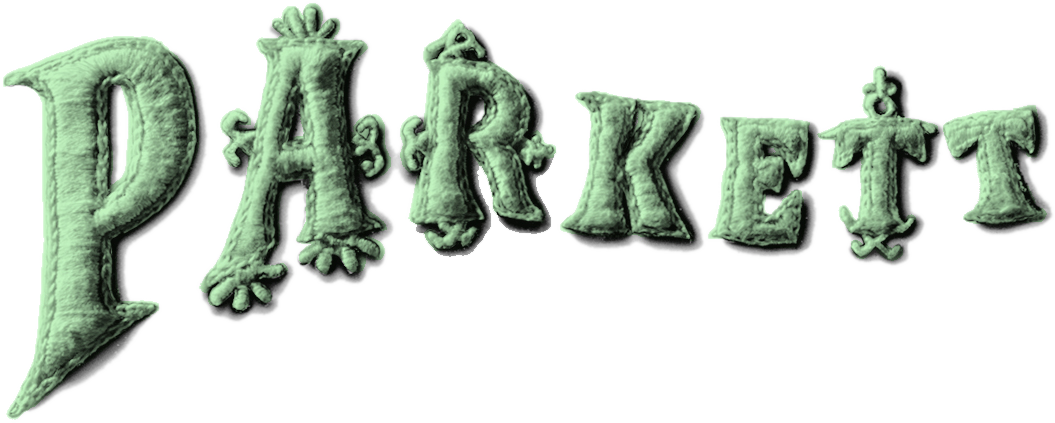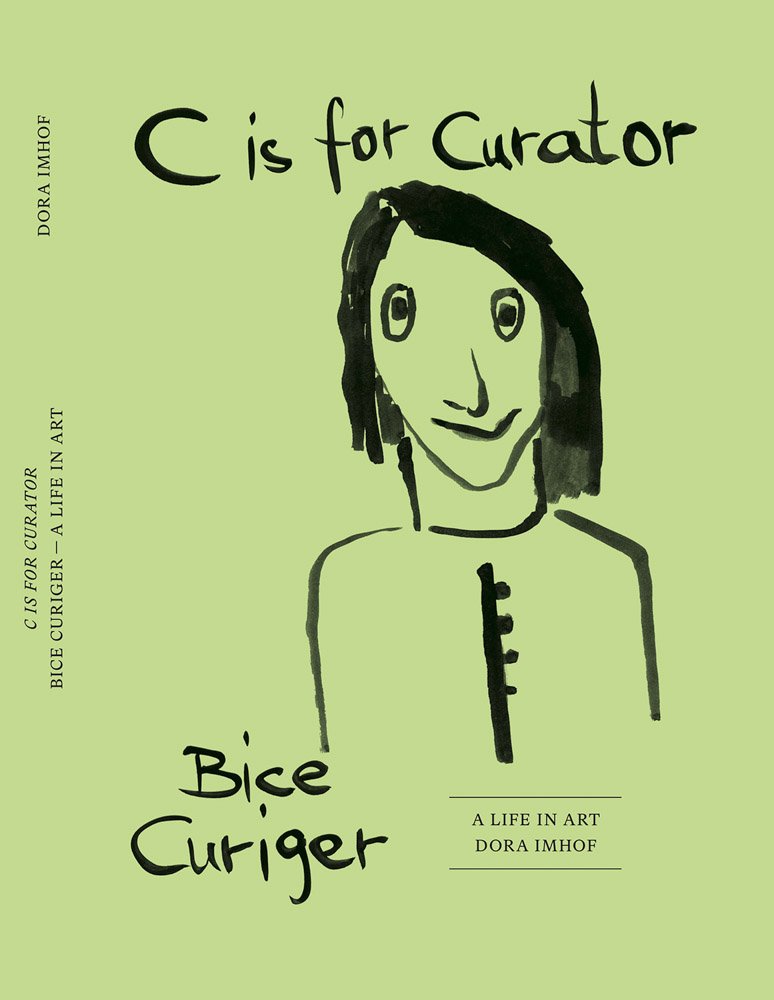My Commedia dell’Arte, Jacqueline Burckhardt
The new English edition of La mia commedia dell'arte (2022)
“Art is my oxygen. It is also an inexhaustible horn of plenty, across the ages and disciplines.” Jacqueline Burckhardt approaches art from many different angles: as a former restorer of artworks, as an art historian, as the initiator of the performance art program at the Kunsthaus Zürich, as a co-editor of the art magazine Parkett, as a curator of site-specific art on the Novartis Campus in Basel, as a lecturer at the Accademia di Architettura in Mendrisio, Switzerland, and as the director of the Sommerakademie residency program at the Zentrum Paul Klee in Berne. She has also been involved in cultural policymaking, having served as the president of the Swiss Federal Art Commission for nine years.
Running through La mia commedia dell’arte is an extended meandering conversation between Jacqueline Burckhardt and curator/art historian Juri Steiner, which reveals her “inter esse”, her being in between and in the thick of the field of art. As effortless as it appears, the conversation is nonetheless profound and attractively illustrated, evolving into a fascinating account of Burckhardt’s thought and work. Like rhizomes, the subject matter branches out into her many areas of endeavor. It touches on the twofold historicity of works of art, which must be taken into account in art restoration in particular, and which is so masterfully and playfully handled by Giulio Romano, the “stage director of an antiquity brought back to life”, on whom she wrote her dissertation back in the day. The interlocutors consider Herbert Lachmayer’s concept of “aesthetic intelligence” and the metaphysical nature of a work of art. They introduce us to Kairos, the Greek god of the opportune moment, as well as to Renaissance patroness of the arts Isabella d’Este, a botfly and an octopus. Jacqueline Burckhardt has been writing about contemporary art for forty years now. The selected writings included in this book tie into some of the topics broached in the conversation and provide a representative cross-section of her essays.
Five textual and visual inserts by Laurie Anderson, Kurt W. Forster, Katharina Fritsch, Herbert Lachmayer and Pipilotti Rist give us a sense of her ties to these artists and authors.
With a conversation between Juri Steiner and Jacqueline Burckhardt.
Cover: Artist work by Herbert Lachmayer and Kai Damian Matthiesen
The new English edition of La mia commedia dell'arte (2022)
“Art is my oxygen. It is also an inexhaustible horn of plenty, across the ages and disciplines.” Jacqueline Burckhardt approaches art from many different angles: as a former restorer of artworks, as an art historian, as the initiator of the performance art program at the Kunsthaus Zürich, as a co-editor of the art magazine Parkett, as a curator of site-specific art on the Novartis Campus in Basel, as a lecturer at the Accademia di Architettura in Mendrisio, Switzerland, and as the director of the Sommerakademie residency program at the Zentrum Paul Klee in Berne. She has also been involved in cultural policymaking, having served as the president of the Swiss Federal Art Commission for nine years.
Running through La mia commedia dell’arte is an extended meandering conversation between Jacqueline Burckhardt and curator/art historian Juri Steiner, which reveals her “inter esse”, her being in between and in the thick of the field of art. As effortless as it appears, the conversation is nonetheless profound and attractively illustrated, evolving into a fascinating account of Burckhardt’s thought and work. Like rhizomes, the subject matter branches out into her many areas of endeavor. It touches on the twofold historicity of works of art, which must be taken into account in art restoration in particular, and which is so masterfully and playfully handled by Giulio Romano, the “stage director of an antiquity brought back to life”, on whom she wrote her dissertation back in the day. The interlocutors consider Herbert Lachmayer’s concept of “aesthetic intelligence” and the metaphysical nature of a work of art. They introduce us to Kairos, the Greek god of the opportune moment, as well as to Renaissance patroness of the arts Isabella d’Este, a botfly and an octopus. Jacqueline Burckhardt has been writing about contemporary art for forty years now. The selected writings included in this book tie into some of the topics broached in the conversation and provide a representative cross-section of her essays.
Five textual and visual inserts by Laurie Anderson, Kurt W. Forster, Katharina Fritsch, Herbert Lachmayer and Pipilotti Rist give us a sense of her ties to these artists and authors.
With a conversation between Juri Steiner and Jacqueline Burckhardt.
Cover: Artist work by Herbert Lachmayer and Kai Damian Matthiesen
The new English edition of La mia commedia dell'arte (2022)
“Art is my oxygen. It is also an inexhaustible horn of plenty, across the ages and disciplines.” Jacqueline Burckhardt approaches art from many different angles: as a former restorer of artworks, as an art historian, as the initiator of the performance art program at the Kunsthaus Zürich, as a co-editor of the art magazine Parkett, as a curator of site-specific art on the Novartis Campus in Basel, as a lecturer at the Accademia di Architettura in Mendrisio, Switzerland, and as the director of the Sommerakademie residency program at the Zentrum Paul Klee in Berne. She has also been involved in cultural policymaking, having served as the president of the Swiss Federal Art Commission for nine years.
Running through La mia commedia dell’arte is an extended meandering conversation between Jacqueline Burckhardt and curator/art historian Juri Steiner, which reveals her “inter esse”, her being in between and in the thick of the field of art. As effortless as it appears, the conversation is nonetheless profound and attractively illustrated, evolving into a fascinating account of Burckhardt’s thought and work. Like rhizomes, the subject matter branches out into her many areas of endeavor. It touches on the twofold historicity of works of art, which must be taken into account in art restoration in particular, and which is so masterfully and playfully handled by Giulio Romano, the “stage director of an antiquity brought back to life”, on whom she wrote her dissertation back in the day. The interlocutors consider Herbert Lachmayer’s concept of “aesthetic intelligence” and the metaphysical nature of a work of art. They introduce us to Kairos, the Greek god of the opportune moment, as well as to Renaissance patroness of the arts Isabella d’Este, a botfly and an octopus. Jacqueline Burckhardt has been writing about contemporary art for forty years now. The selected writings included in this book tie into some of the topics broached in the conversation and provide a representative cross-section of her essays.
Five textual and visual inserts by Laurie Anderson, Kurt W. Forster, Katharina Fritsch, Herbert Lachmayer and Pipilotti Rist give us a sense of her ties to these artists and authors.
With a conversation between Juri Steiner and Jacqueline Burckhardt.
Cover: Artist work by Herbert Lachmayer and Kai Damian Matthiesen



